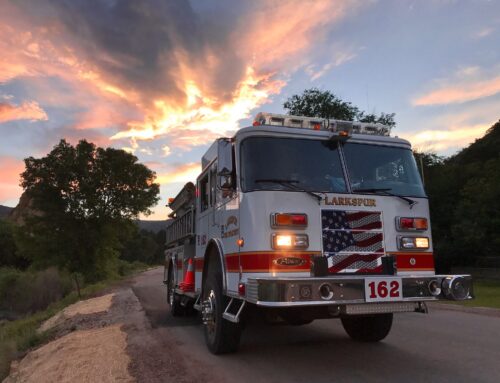West Valley First Responder Organizations Join Contexture
Published on July 28, 2017

HIE is part of innovative approach to reduce avoidable 911 calls and hospital transports.
Traditionally, first responder organizations such as fire departments have been in the business of treating and transporting patients to hospitals — the most expensive place to deliver care. To help optimize the overall workflow for first responders and reduce costs for patients, the fire departments in five West Valley cities created the Community Paramedicine West Consortium, a system that is continually improving department results, reducing 911 calls, hospital transports and overall costs. In addition, these fire departments are connecting their paramedics to the Arizona HIE for better decision making in the field when it comes to treating and referring patients.
The fire departments of Surprise, Sun City, Peoria, Goodyear and Avondale formed the Consortium in 2015, with funding from the Vitalyst Foundation, with the aim to examine frequent 911 callers and find ways to improve results and reduce 911 calls. One of the key tools in this effort involved connecting paramedics to Contexture in order to make better informed decisions and referrals in the field.

Jesus Rivera, Surprise Fire-Medical
The Consortium identified patients that had called 911 more than three times a month or more than 12 times a year, a total of 758 people. From there, the Consortium reached out to these frequent callers encouraging them to enroll in a program where paramedics would make regular non-emergency visits to assess their home situation and identify the root causes of their frequent calls.
These regular visits involve cases such as checking on diabetic patients to see how they are managing their diet, or “trip and fall” patients to assess and correct fall hazards in the home. This proactive outreach produced some outstanding results in the one-year pilot, according to Jesus Rivera, Battalion Chief of the Surprise Fire Department. Of the 158 residents who were enrolled in the program, 74 had accounted for 447 calls to 911 in the previous year. In the pilot program, these 447 calls were reduced to 54 calls between July 2015 and June 2016.
One frequent 911 caller was an 85-year-old patient who experienced frequent falling and was often angry and confused upon the responders’ arrival. On one visit, they found that the patient was unable to perform simple daily tasks on their own. When they viewed the patient’s history in the Arizona HIE, they found that he had been diagnosed with Alzheimer’s. Although he didn’t show acute symptoms requiring emergency treatment, the paramedics used the information found in Arizona’s HIE — along with their observations — to make the decision to transport him to the hospital. Later, they found that the patient was suffering from a urinary tract infection which could have led to sepsis if left untreated.
Another frequent caller was a male patient in his late 30’s who had been taken to the hospital multiple times. His medical complaints typically included pain in his arms and legs as well complaints of dizziness. Access to the patient’s history in the HIE, however, showed that behavioral health issues were an underlying cause for his frequent visits to hospital emergency departments. With this information, the paramedics referred the patient to his behavioral health provider where he was able to get the care that he needed.
Rivera cites these cases as examples of how the connection with Contexture is improving treatment and referrals in the field, as well as reducing 911 calls and avoidable trips to the hospital. Access to patient history through the HIE also helps with follow-up care. “We always wonder what happens to the patients after we transport them to the Emergency Department,” Rivera shared. “By using the HIE, we are able to follow up with our patients and find a way to continue helping them.”

Paul Luizzi, City of Goodyear Fire Dept.
Paul Luizzi, Fire Chief of the Goodyear Fire Department has seen tremendous benefit from being connected to Arizona’s HIE. His paramedics are actively engaged in the AHCCCS Treat and Refer program, and he calls the HIE connection an “incredible resource” in determining where to send patients. “Our staff feels as if we are social workers by responding in the field when called to emergency situations, and we can take every resource that we can get,” he said.
The five fire departments in the West Valley have been in touch with fire departments around the state and others are following their lead. Contexture now has more than 12 first responder organizations participating in the HIE.
We always wonder what happens to the patients after we transport them to the Emergency Department. By using the HIE, we are able to follow up with our patients and find a way to continue helping them.
- Jesus Rivera, Surprise Fire-Medical





